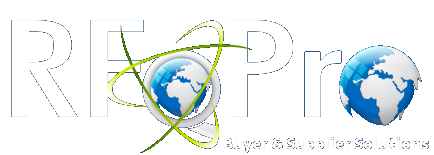Most Popular Forms used by Purchasing Professionals today (3 free samples)
In order to manage the need to purchase supplies and services, purchasing professionals turn to certain forms, templates or documents to obtain the internally requested products or services.
Some standard forms you might be familiar with would be: Request for Quotation (RFQ); Request for Proposal (RFP); Request for Inofrmation (RFI); and there are many others.
While most of these procurement forms are relatively straightforward, the RFP is a form that has continued to evolve since its first started to appear in the early ’80’s. Since then, RFP’s have become more prevalent, refined and in some cases are all many companies issue (not what we recommend!!). Regardless, companies that purchase goods and services need procurement forms to help them manage their business. These forms are a necessary evil and ultimately will help you complete the task of getting to the stage for an award.
Work flow and players involved when you issue a RFP / RFQ
Before we detail the templates most used by purchasing professionals today, we think some background on the process would be helpful. Typically, there are 3 or 4 role players in the RFP or RFQ process. There is a Tenderer aka Bidder / Offeror / Supplier / Vendor (A seller of materials and/or supplies who submit a proposal or quotation against your requirements); then there is the Owner which is the parent company issuing the document and paying the bills — the user or internal department making the request or the fellow employees needing the material or service to complete the project — and last the procurement officer who is the person managing the RFP / RFQ. The procurement officer or purchasing agent often generate the documents, issue the RFP, analyze the supplier quotes, makes a recommendation, and finally manages the award to the supplier of choice. There are others like the accounting department which will pay the supplier and so on.
Now back to the most popular forms used today:
RFP – (Request for Proposal). Without question, this form is considered the go to form for procurement professionals, on larger dollar spend and when your selection criteria might use additional factors other than price, like service capabilities or technical support.
Free RFP Template is included in our Welcome Pack
RFQ – (Request for Quote). To some this is up for debate, but depending on the organization, sometimes the Buyer is simply looking for price and delivery on a simple material request. We need 6 widgets and here is the part # so in this instance a RFP is overkill and is not worth the cost or effort.
Free RFQ Template is included in our Welcome Pack
EOI or RFI – (Expression of Interest) or (Request for Information). An Expression of Interest (EOI) or (RFI) is used to gauge interest from potential suppliers for a potential upcoming project on the drawing board or hope to officially tender in the near future. An EOI, gives you the opportunity to pre-qualify vendors to ensure they are capable of completing the work under the restrictions or specifications outlined in your document.
Free Simple RFI Template > 8 pages
LOI or LOU – (Letter of Intent) or (Letter of Understanding). Often the next document to be used by the purchasing department if the spend warrants (vs going right to a PO). It captures the summary terms negotiated by both parties during the award process and these details will eventually make their way into the formal contract. Simply, the Buyer is looking for a document they can use to bridge them over until a formal contract document can be executed.
There are many other documents a Buyer / Purchasing Agent will use in their day to day purchasing needs and if you, like many of us, find the RFP Process overwhelming or too time consuming the RFQPro Step by Step RFP Guide will make these tasks easier and will be released soon. It will simplify the RFP Process by providing a step by step guide c/w with sample forms typically used at each stage when issuing a RFP — a start to finish guide c/w templates. All templates will be provided in edit friendly Microsoft Word format. This comprehensive guide and template pack will be provided at a discount to all our subscribers and with returning customers receiving additional discounts over and above discounts offered to our subscriber base.
